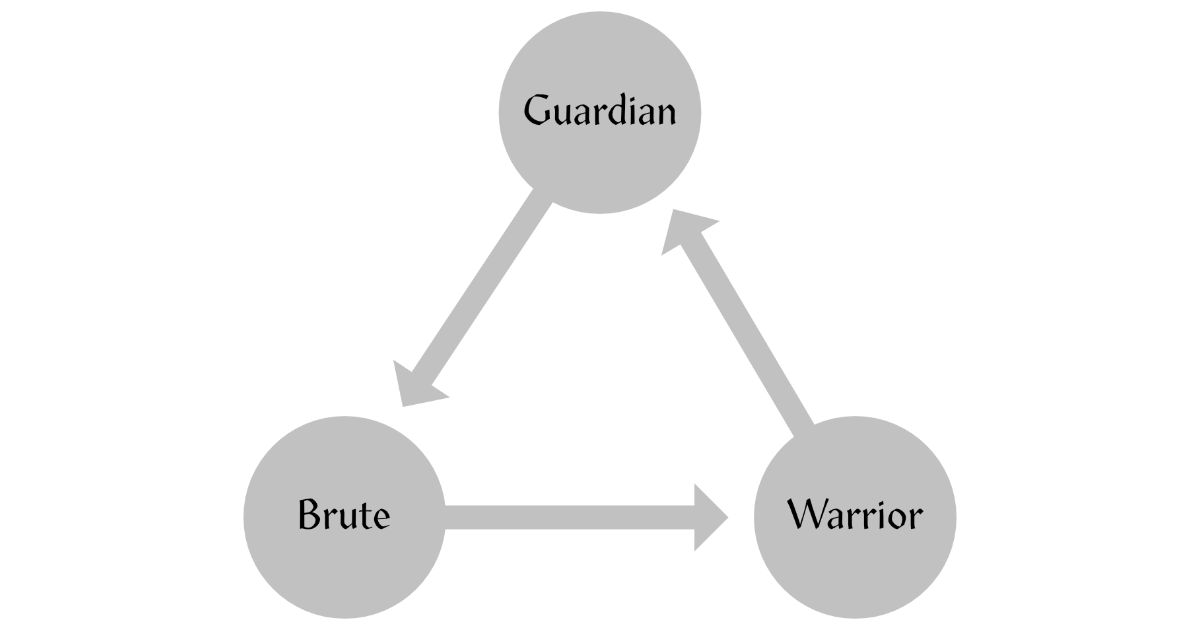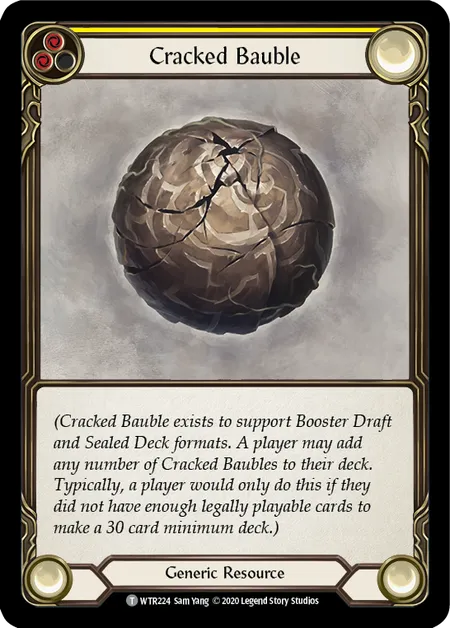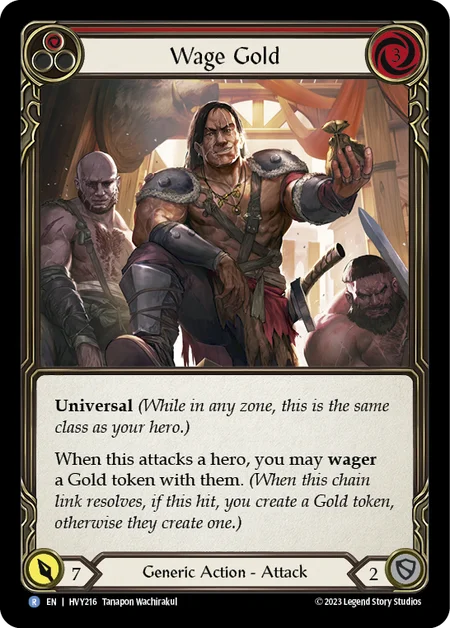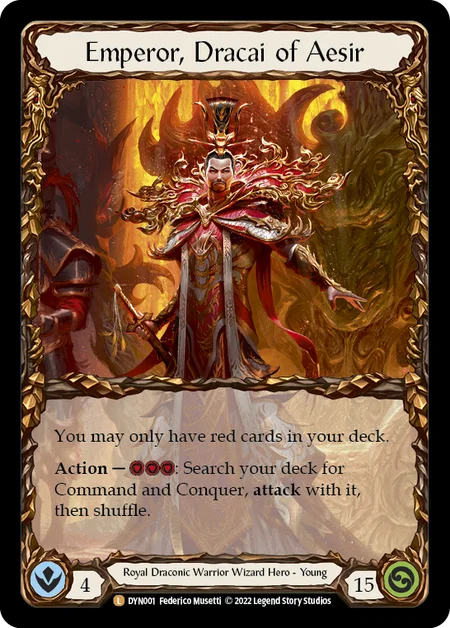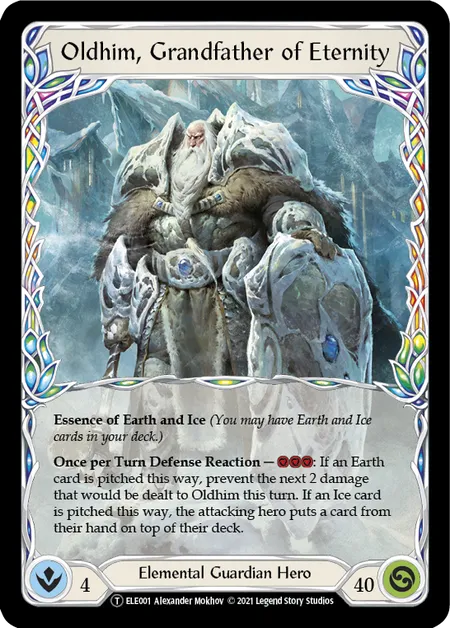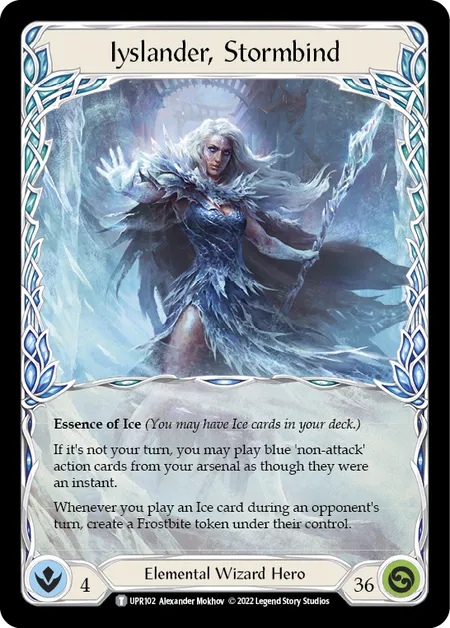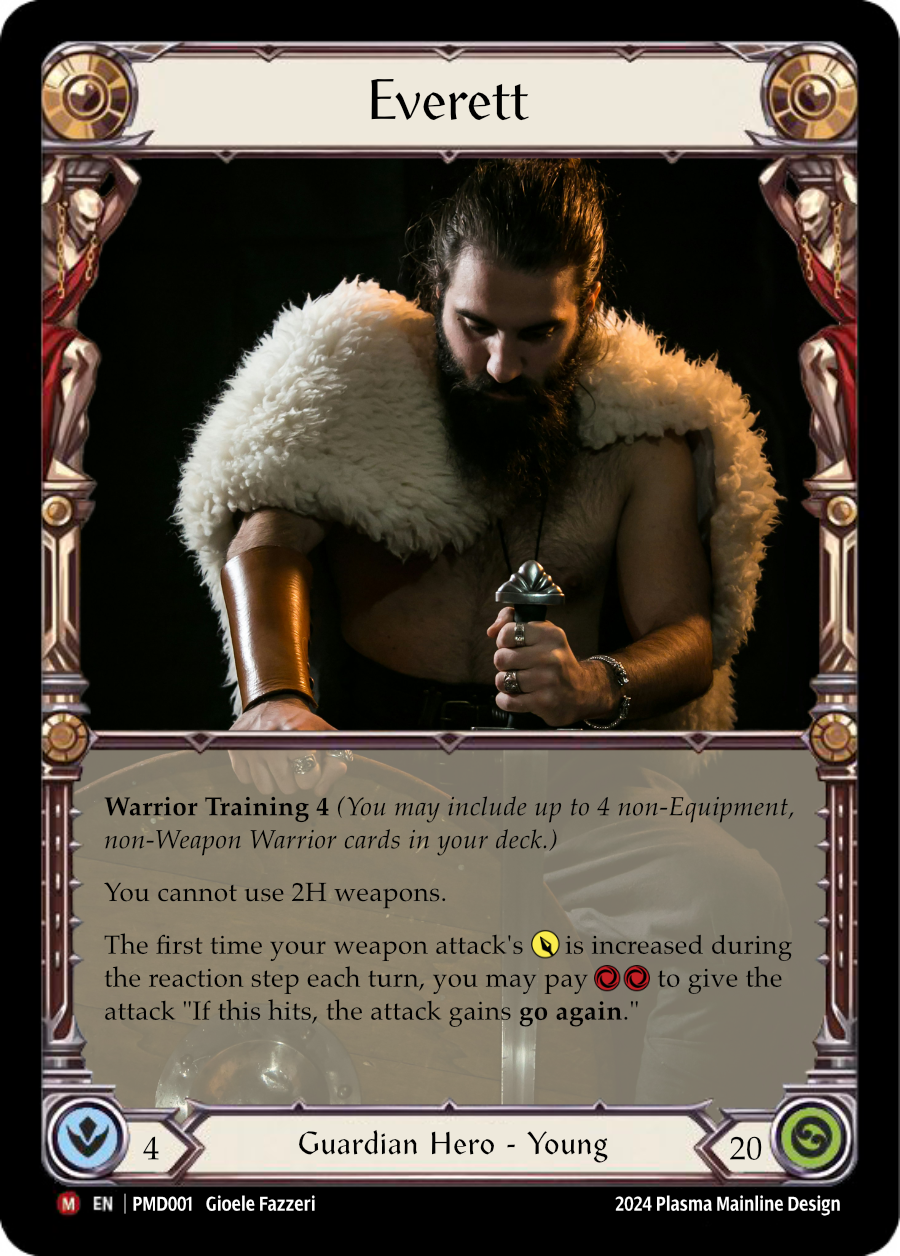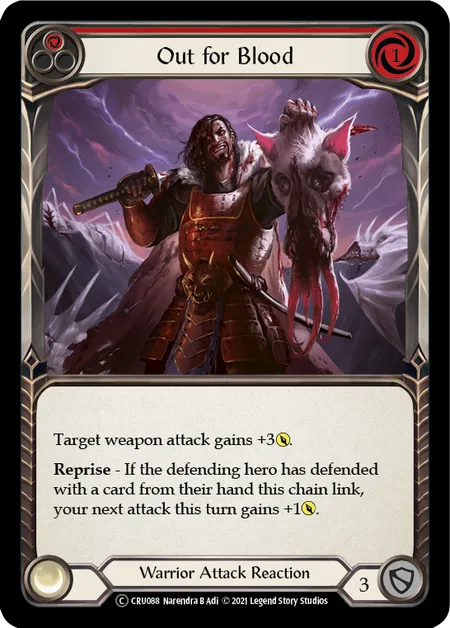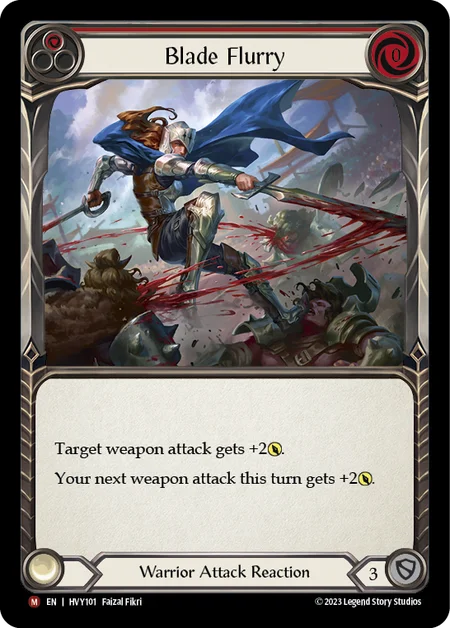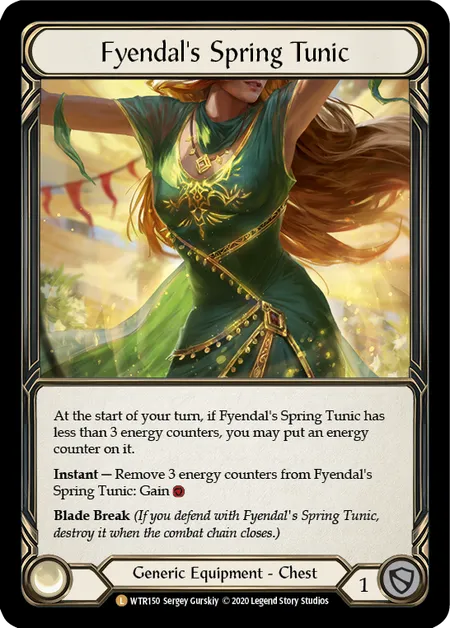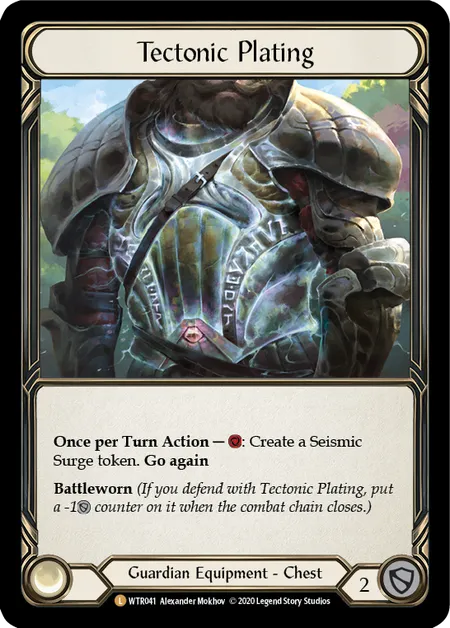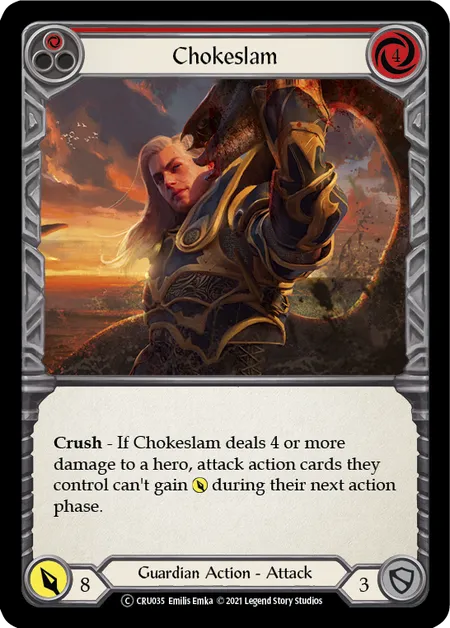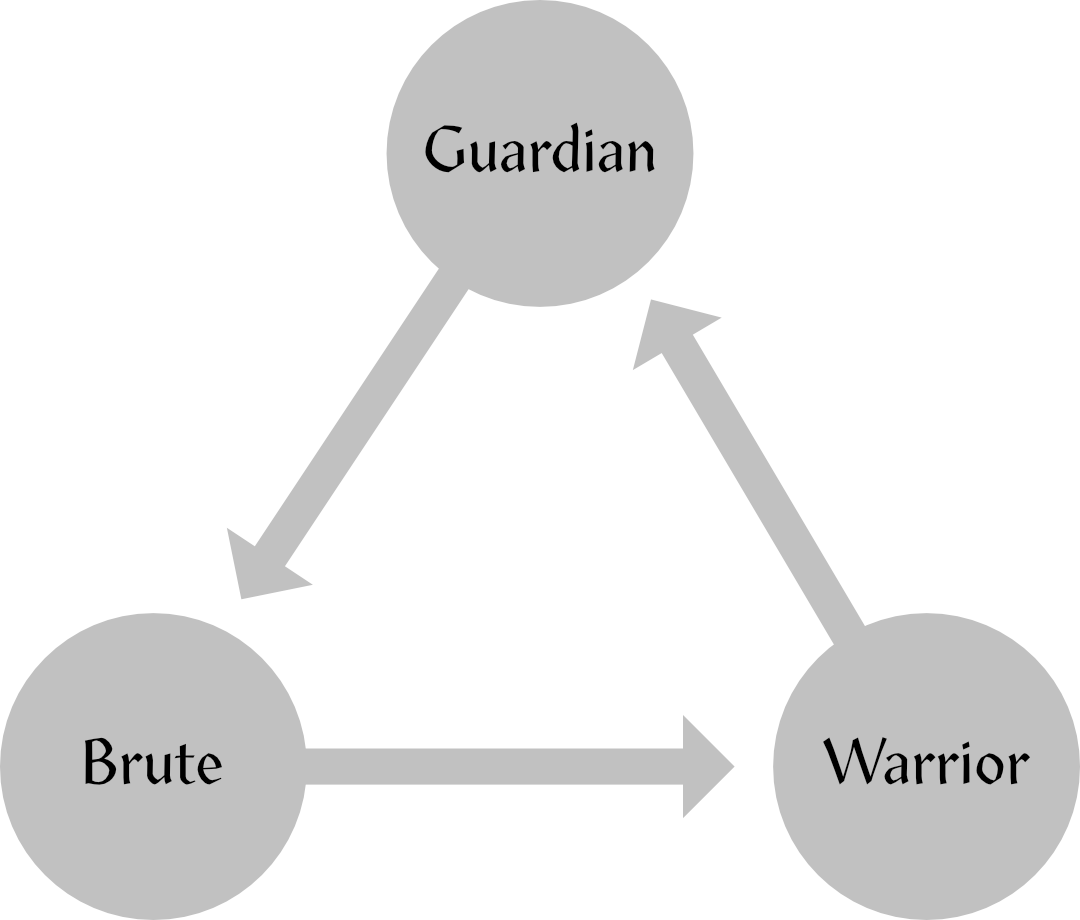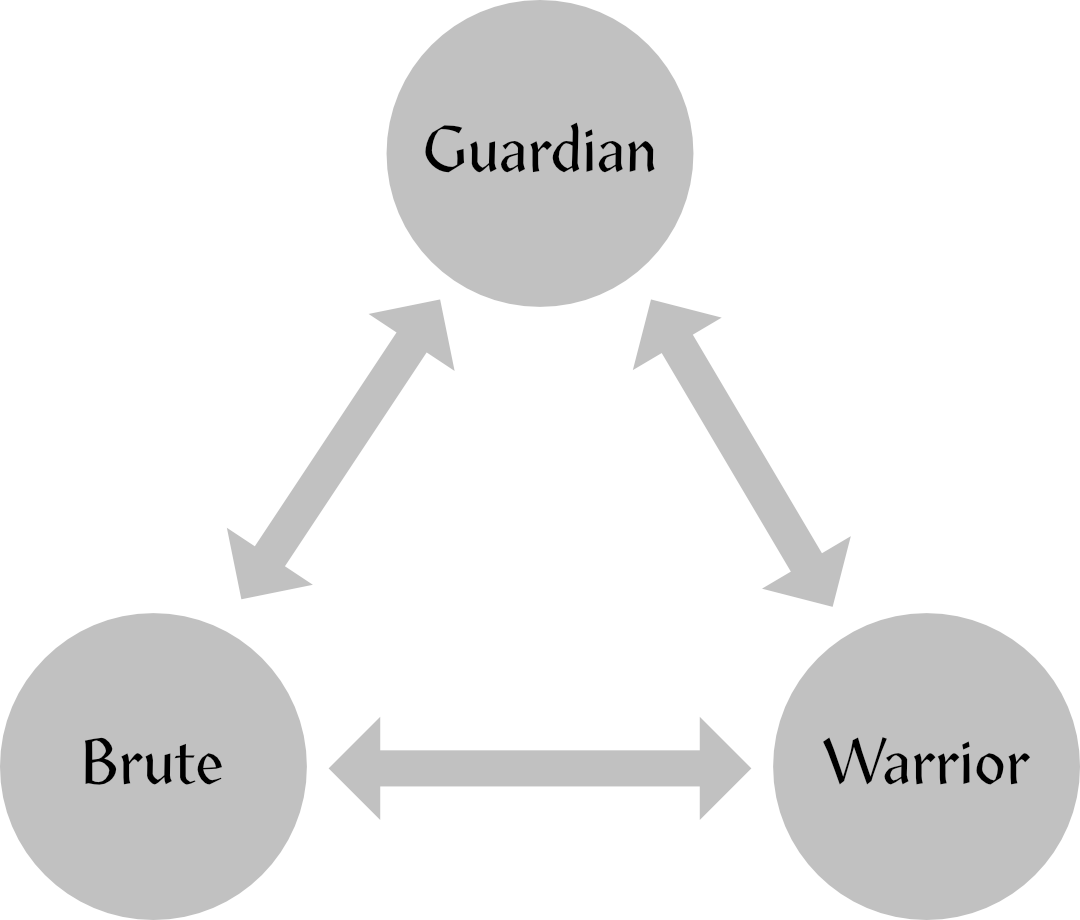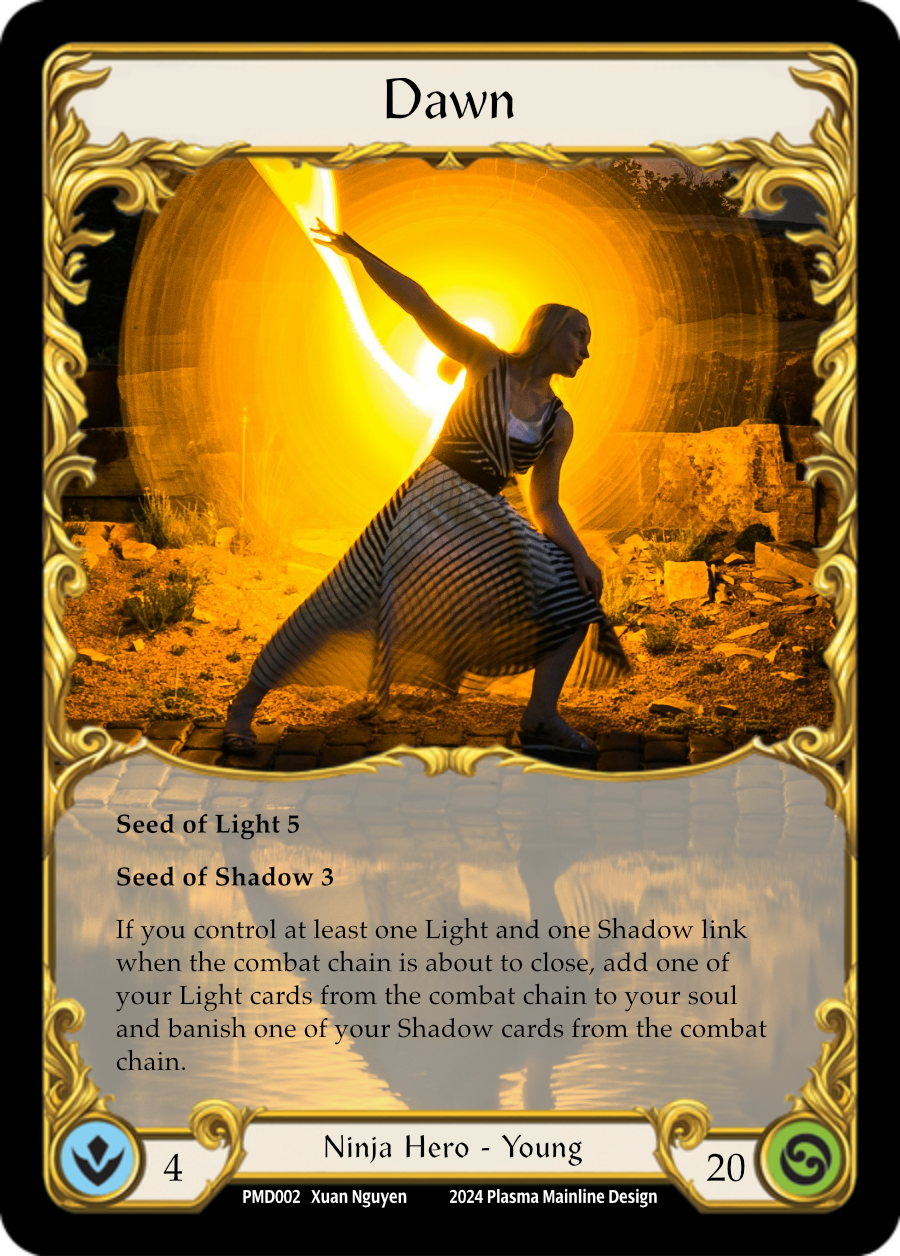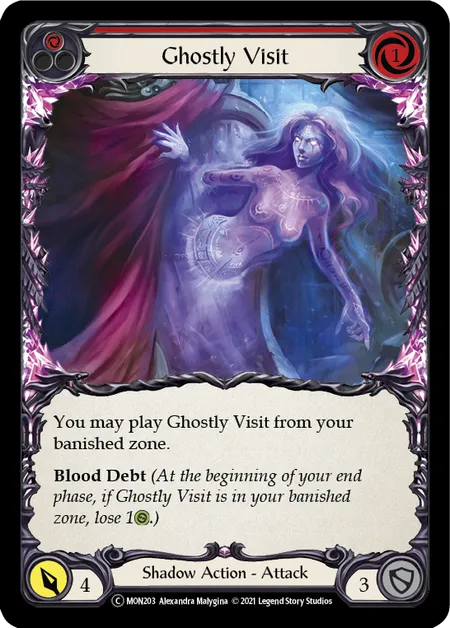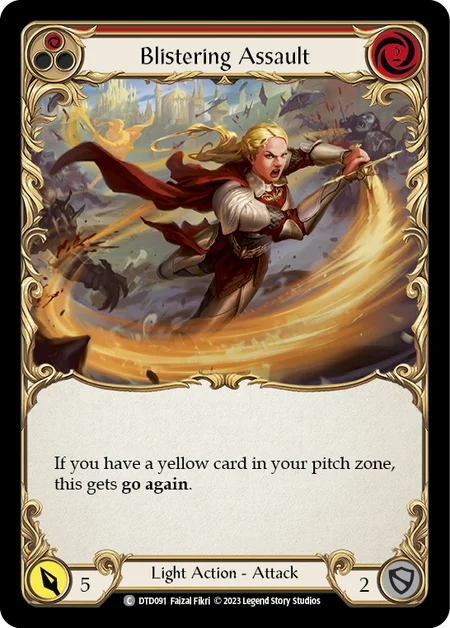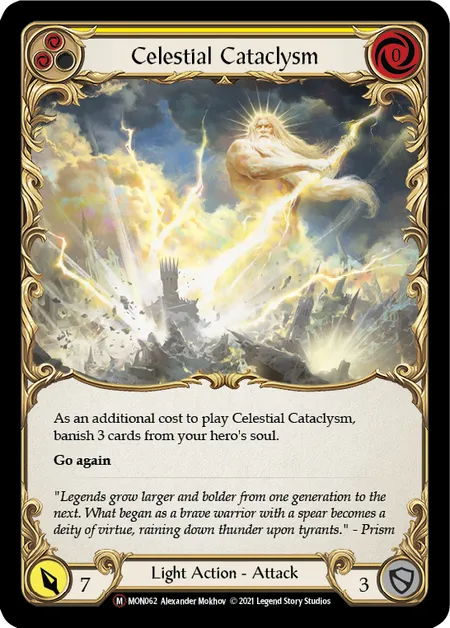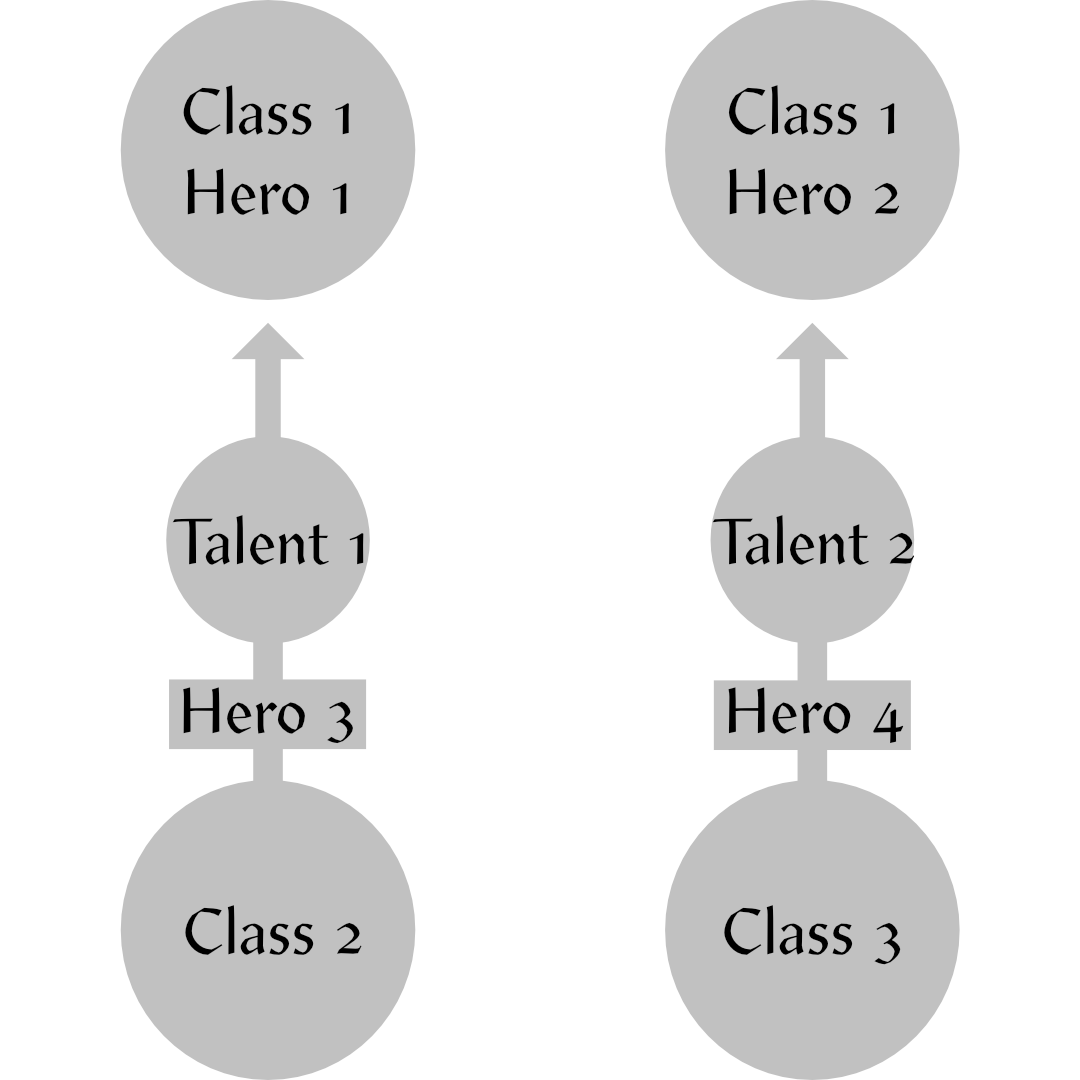Splashing cards
Have you ever sat down to draft the latest Flesh and Blood set, excited to draft the coolest hero, only to realise after four or five picks that none of their cards are making their way to you anymore because several people to your right are drafting that class? Or have you ever been cut out of a class at a competitive event and had to include Cracked Baubles in your deck because of it? Judging from how often I hear this topic discussed in local metas and on content creators’ channels, this happens quite often in this game. And it feels terrible. As a consequence, some people try to stay open early in the draft by choosing first picks that can end up in two or three heroes, maybe. For this reason, the latest set Heavy Hitters reintroduced hybrid cards (first debuted in Outsiders), i.e. cards that are usable in more than one class, and keep you open for two lanes if you pick them early. Additionally, the set brought a new keyword to the table, Universal, which makes a card count as a class card for any hero, opening up various synergies. However, there is another option that I would like to explore in this article: splashing.
What is splashing?
Splashing is a term that carries over from other card games like Magic: the Gathering, where, in principle, you can include any cards you have drafted in your deck, or Android: Netrunner, which uses a system of points to spend on cards outside of your hero’s faction. In a limited format, this ensures that your early picks do not necessarily go to waste if you are forced to pivot to a different class, whilst in a constructed format you can use your few outside picks to shore up some deficiencies in your class pool or enact truly out-of-the-box strategies. Generally, it opens up the deckbuilding process tremendously.
Why splashing?
Whilst the hero-centric design of Flesh and Blood is definitely intentional, it sometimes leads to players expressing that they feel limited in the creative deckbuilding process. This is due to the strong class identities, e.g. Guardians lack go again and attack reactions, but make up for it in big attack actions, whilst Warriors have a lot of go again and attack reactions, but only for their weapons. However, a hero like Emperor, who has access to cards from two different classes and one talent, can play on different axes, which would make him incredibly versatile if not for his severe limitation that he can only include red cards in his deck. Since the class identities are crafted so deliberately, classes should not be mashed together willy-nilly to avoid overly strong amalgamations. However, infusing a class with access to just a handful of cards from a different class will result in a playstyle unique to that hero, and stimulate creativity and experimentation.
Splashing class cards
So what should splashing in Flesh and Blood look like? I believe it would be unhealthy to just allow splashing across the board. Rather, I would like to see deliberately crafted heroes of a given class with limited access to a second class, thus creating a unique identity.
Training keyword
To accomplish this, we take a page from Tales of Aria’s book, where they introduced the Essence keyword. Whenever a hero’s text box features e.g. Essence of Ice, they can include cards of the Ice (sub-)talent in their deck, like Oldhim or Iyslander. The keyword I propose here works similarly: [Class] Training X means you can include up to X cards of the specified class in your deck (this is X copies, not X playsets), except for Equipment and Weapons, because they are too central to a class’s core identity. (Note: X should increase for adult versions such that the ratio of splashed cards to deck size is identical in Blitz and CC.)
Hero example
As an example, consider a young lad who grew up in the shadows of the Deathmatch Arena, but was trained by two mentors, each with their own fighting style.
Ever since he was able to lift a warhammer, Everett liked the comforting weight of it in his hands. Naturally, the first mentor he sought out was an expert in hammer wielding, and taught him most of the fundamental techniques. However, preferring the balance of dual-wielding hammers, he sought out a second instructor, who could teach him how to use them to greater effect.
This unique upbringing is reflected in Everett’s hero ability. He gave up access to two-handed weapons to be trained by a Warrior, giving him access to go again on his weapon strikes, but only if he increases the attack’s power in the reaction step. Outside of Pummel, though, Guardian does not have access to attack reactions that affect weapons, so these pumps will most likely come from the Warrior cards they get to include. Since all their one-handed weapons cost three resources to activate, and it costs two resources to give go again, they might be driven to 1-cost reactions like Out for Blood, or the new 0-cost allstar Blade Flurry, to go all-in on the double hammer plan.
The deck could be complemented with Fyendal’s Spring Tunic, to make double weapon plays possible off of Pummel and three blue pitch cards, or Tectonic Plating, to bank the leftover resource during Blade Flurry turns or to replace the second hammer swing with a 4-cost attack like Chokeslam (also possible with Tunic, of course). So many options with only a handful of splashed cards and a flavourful, unique, and synergistic hero ability, that is limited by the cards they can include!
Set design
As I mentioned in the introduction, what originally prompted me to start thinking about this is the ability to splash cards when drafting or playing sealed. So how do we incorporate this design tool into a draft set? Clearly, a draft set with multiple classes that includes heroes with the Training keyword can be approached in different ways, both in design and how you draft it. Here, we present two distinct set designs and how it impacts the draft process.
Three-hero set
The first design I would like to highlight is a draft set with three heroes of different classes, like Tales of Aria or Uprising. For this example though, consider the classes from Heavy Hitters: Brute, Guardian, and Warrior. As a starting point, take Everett from our hero example. He is a Warrior-trained Guardian, meaning that the Guardian card pool will be dedicated to his design (whilst not straying from the class’s design principles, i.e. no go again or attack reactions), but tapping into the Warrior pool to round out his deck. As the second hero, we would introduce a Guardian-trained Brute, and finally a Brute-trained Warrior. This creates a one-way triangle structure where each hero taps into two out of three class pools, much like the heroes in Tales of Aria tapped into two of the three elemental pools.
When drafting a set like this, the set’s structure allows you to pick up powerful cards early that are playable in two of the three heroes before having to commit to one. I imagine trying to stay open in a set like this may feel similar to committing to one element in Tales of Aria without settling on the hero. Additionally, in a set like this hybrid cards can effectively function as the Generic pool without having to inject new Generic cards in the constructed card pool.
Six-hero set
Two of the most recent draft sets, Heavy Hitters and Outsiders, featured a three-class structure with two heroes per class, each representing their own archetype within their class. This lends itself well to the inclusion of the Training keyword. Again considering the Brute-Guardian-Warrior class spread, one hero in the Guardian class would gain Warrior Training and the other one Brute Training, instantly resulting in two archetypes, e.g. one interacting with weapons and one with discarding cards. Such a set offers even greater freedom in drafting than the previous structure because any singular card can end up in a deck of any class. Consequently, such a set may even be functional without any Generic or hybrid cards at all, if the numbers accompanying the Training keyword are tweaked carefully.
Splashing talent cards
Entirely analogous to the class-splashing described above, a similar mechanic can be implemented for talents.
Seed keyword
If the Essence keyword entails that you can include any amount of cards of a certain talent, I propose the Seed keyword to indicate a limited inclusion of cards from a specific talent, followed by a number, as in the case of the Training keyword. Then Seed of [Talent] X would let you include up to X non-Equipment, non-Weapon cards of the specified talent in your deck.
Hero example
As an example, consider a young Solanian woman, who found a seed of hope during the night the Demonastery attacked… at a cost.
Dawn is hero who can tap into two different talents with an ability that rewards you for using both aspects on a single combat chain. Though she is allowed to play more Light than Shadow cards, a single copy of Ghostly Visit can go a long way if you can keep recurring it from your banished zone. In the current card pool, it could be paired with a card like Blistering Assault, which has a built-in way to gain go again, to create a combat chain that satisfies her ability. And if she does this three times, she might find a great payoff in a single copy of Celestial Cataclysm, which gives her a chance to play and banish Ghostly Visit again…
Set design
Just like with the Training keyword for classes, the Seed keyword can be exploited to construct draft sets that want to mix multiple talents, or talented and untalented, but seeded heroes. Again, I present two examples here.
Three-hero set
A hero like Dawn from the hero example above is a great asset to construct a two-talent, three-hero set à la Uprising. Say you want to create a Light vs Shadow set like Monarch, but with only three heroes. To avoid a talent imbalance like in Uprising, you could create one Light hero, one Shadow hero, and one hero who can tap into both talents in a limited way. Then, you could make it a single-class set like Bright Lights, allowing Dawn to tap into talented class cards (see graphic below), or decide to feature various classes, treating the unclassed talent cards as the set’s Generics.
Four-hero set
The final set design I would like to highlight is a four-hero design with two heroes of different talents and classes, and two heroes of a shared third class, but seeded with different talents. This creates the three-class dynamic that we know from Outsiders and Heavy Hitters, but adds a layer of options with the two talents. To stay open to two heroes, you could commit to one of the talents or commit to the shared class of the two seeded heroes, creating an interesting dynamic with plenty of options right from the start of the draft.
Conclusion
There is a wide-open, intriguing design space in allowing certain heroes to splash a few cards from another class or talent to create unique decks. At the same time, a draft set focused on several classes and/or talents can leverage this mechanic to enable players to stay open early in a draft whilst still picking up powerful class/talent cards that can be played in multiple heroes.
If you enjoyed this article, please leave a comment below or spread the word on the socials!
